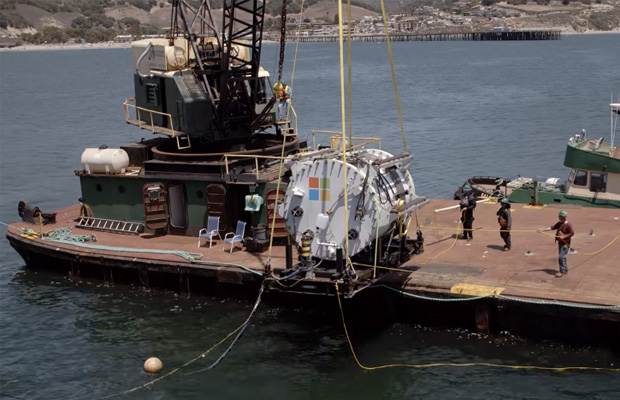Microsoft 'Project Natick' Data Center Lives In A Pineapple Under The Sea
Submerging your PC in water probably isn't something you're keen on trying, and with good reason—water and electronics aren't the best of friends. So why then is Microsoft experimenting with under sea data centers? For one, we're coastal creatures with nearly half of society settling down near large bodies of water. However, it's not the only reason.
"The vision of operating containerized data centers offshore near major population centers anticipates a highly interactive future requiring data resources located close to users. Deepwater deployment offers ready access to cooling, renewable power sources, and a controlled environment," Microsoft says.

This is where Project Natick comes in. Project Natick is a research project to manufacture and operate an underwater data center, which to some extent Microsoft has already done by way of an experimental prototype vessel named Leona Philpot. The vessel sat on the seafloor about 1 kilometer off the Pacific coast and was operational from August to November of last year.
In addition to location and cooling benefits, these underwater data centers offer rapid provisioning—it takes a mere 90 days from start to finish to construct and deploy one of these vessels. The reason that matters is because it allows Microsoft and its partners to react fast to market demands, along with offering quick deployment in response to natural disasters and special events like the World Cup.
"The vision of operating containerized data centers offshore near major population centers anticipates a highly interactive future requiring data resources located close to users. Deepwater deployment offers ready access to cooling, renewable power sources, and a controlled environment," Microsoft says.

This is where Project Natick comes in. Project Natick is a research project to manufacture and operate an underwater data center, which to some extent Microsoft has already done by way of an experimental prototype vessel named Leona Philpot. The vessel sat on the seafloor about 1 kilometer off the Pacific coast and was operational from August to November of last year.
In addition to location and cooling benefits, these underwater data centers offer rapid provisioning—it takes a mere 90 days from start to finish to construct and deploy one of these vessels. The reason that matters is because it allows Microsoft and its partners to react fast to market demands, along with offering quick deployment in response to natural disasters and special events like the World Cup.
Natick data centers are intended to last for up to 5 years, equivalent to the intended lifespan of the hardware contained inside. When the 5-year cycle is up, Microsoft retrieves the data center and refreshes the hardware, then tosses it back into the ocean. Microsoft anticipates this going on for at least 20 years, after which time the data center would be retrieved and recycled.
As for when this will become a mass produced thing that's more widely available, that's still up in the air. For now, Project Natick is still in the research stage and being evaluated as to whether or not is a viable solution for Microsoft and other cloud service providers.
As for when this will become a mass produced thing that's more widely available, that's still up in the air. For now, Project Natick is still in the research stage and being evaluated as to whether or not is a viable solution for Microsoft and other cloud service providers.

